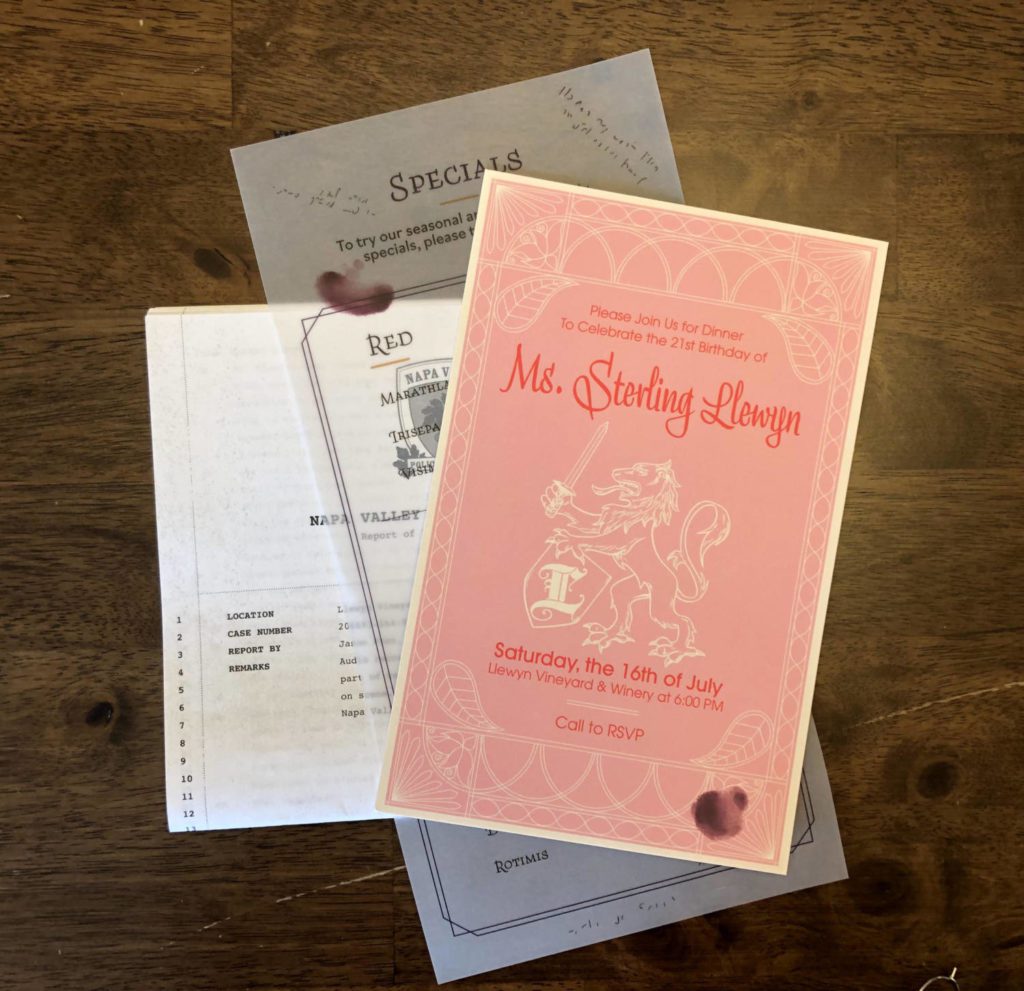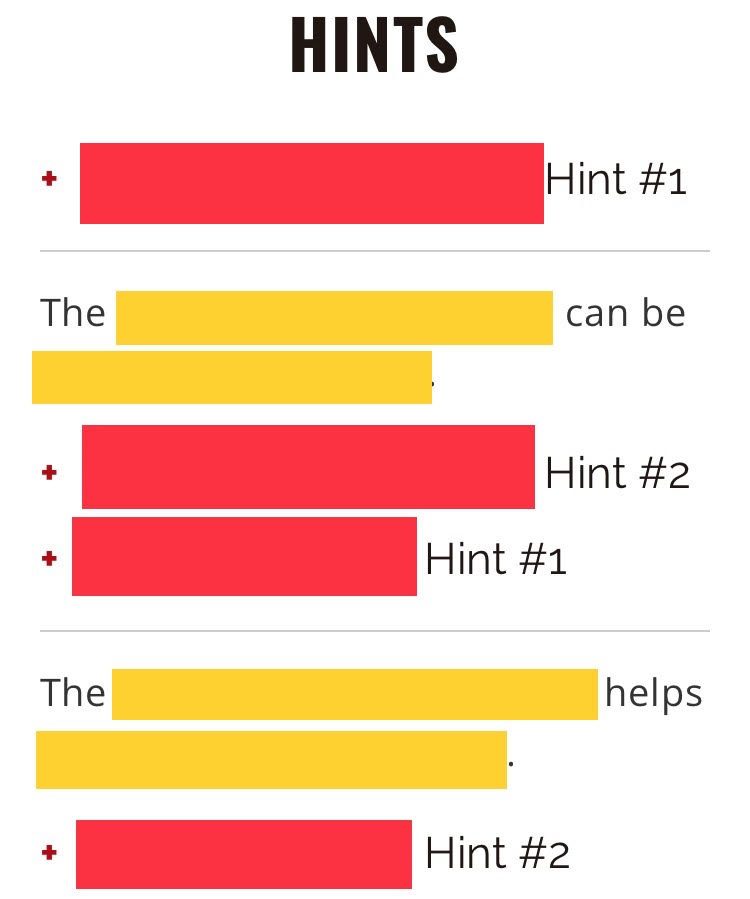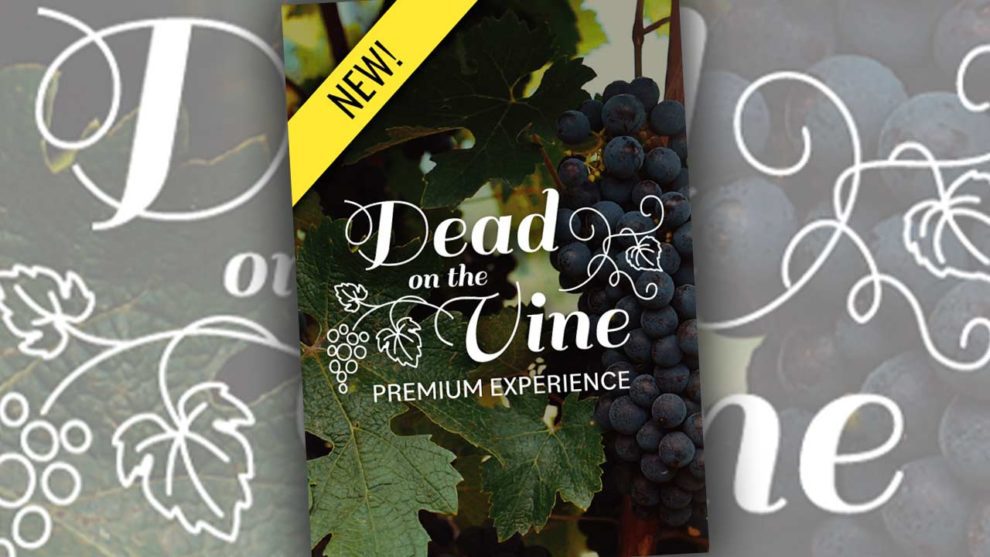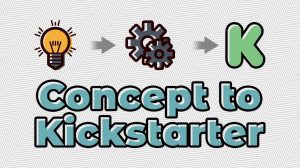In this review anything that might be considered a spoiler is hidden in a collapsible window. In all other ways, this review is spoiler-free.
Power. Resentment. Wealth. Anger. Deception. Alcohol. Murder.
These are the central ingredients in Dead on the Vine. After a small family gathering, the powerful founder/owner of Llewyn Vineyard, Gail Llewyn, was found dead in her home. It might have been old age…but one family member suspects foul play. That’s where you come in. Can you put the pieces together and figure out who killed Gail Llewyn?
Uncorking a Mystery
Dead on the Vine is a one-shot mystery about a murdered matriarch and the messy lives of her manipulative family members. Over the course of roughly 3-6 hours players must identify the killer, their method, and their motive in order to finish the game. The box includes everything needed to solve the case. However, those who need a little more help can find a browser-based hint system and additional clues on the website, a link to which is provided alongside the evidence in the box.
To be clear, there’s already quite a bit of evidence to go through! Dead on the Vine is absolutely bursting with components. The box contains some 20 pieces of evidence, a few of which are multi-part pieces. Outside of one big item that needs to be unlocked through play, the evidence is available right off the bat so that players can immediately jump in and start their casework. The overall production is excellent: sharp graphic design, full-color printing, and even some unusual materials to make the game stand out. It’s a lush presentation that immediately draws players into the world.


While the game is first and foremost a mystery, there’s a surprising amount of world-building at play here. It’s an unexpected master class in how to subtly develop characters and narrative. Each new point of evidence twists what you already know and leads you towards a different conclusion. Small details, like a character’s handwriting or the specific ways they interact with each other, accumulate to create the sense that these are real people, not just characters on the page.
That realism carries through to the gameplay as well. If you’re looking for a batch of brain-burning puzzles, look away. Outside of a few small-ish puzzles, including a devious cypher that was particularly fun to crack, Dead on the Vine is primarily a procedural game, a game about the hard work that goes into catching the perp. Faced with a mountain of evidence, you’ll painstakingly eliminate the red herrings, pin down a suspect, and figure out exactly how and when they did the deed. It’s a lot more like Law & Order than, say, Sherlock Holmes. As we cross-referenced documents to create a timeline of events and sifted through clues to pick apart carefully constructed lies, I truly felt like a detective on the case. Even as we closed in on a suspect, one or two little things kept bugging me, and I knew I couldn’t rest on my laurels if I wanted to put the murderer away for good.
The Dregs
That said, the ending feels a little flat. Unlike some other games, which feature a sort of “pop quiz” format to ensure that players have correctly determined the specifics of the crime, Dead on the Vine comes packaged with a sealed envelope that contains a full breakdown (presented in a fun way that adds to the game’s narrative). Players are free to open it whenever they’re ready, but without that final questionnaire or a ticking clock it lacks a certain drama. In fact, it’s not even clear how much evidence you need to solve the crime, so you might over- or under-prepare without even realizing it. Had I been less confident in our conclusion, I’m not sure how I would have felt about opening the envelope; as it was, we had the murderer dead to rights and the big reveal just confirmed what we already knew.
Getting to that point was a reasonable challenge, at least in our experience. There are enough misdirects, twists, and hurdles to make for an enjoyable game night (or several, depending on the group). The game is listed as a Medium difficulty, with 3 out of a possible 5 diamonds, and I would tend to agree with that assessment overall. There was one particularly difficult leap of reasoning that we felt required the online hint system, but outside of that this should work well for both experienced and inexperienced players. The online hint system is incredibly deep, with multiple hints available for each major piece of evidence.

Be wary that this game does require a significant amount of reading. Thankfully, there are many different things to read so no one should be sitting idle for long. Larger groups may struggle to complete the game quickly, though, if every player has to analyze every piece of evidence individually.
I should also note that the game is pricier than average; at the time of writing, it’s retailing from Hunt a Killer’s website at $69.99. That’s a big chunk of change and many players might be looking to resell it to recoup some of the value. Though the game is mostly resettable, allowing players to trade with friends or family, I’d be hesitant to pass this off to a stranger having opened the envelopes and interacted with a few pieces. Nothing is specifically used up or damaged during play but some interactions may be hard to undo in a way that preserves the game’s initial presentation.

Aftertaste
If you’ve got the cash and don’t mind a few quibbles, Dead on the Vine is a lot of fun. The story it tells is engaging throughout, the production is exceptional, and the mystery requires both clever thinking and diligence to fully solve. So pour yourself a glass of your favorite vintage and sit down to a classic whodunnit that’s sure to delight.












Add Comment